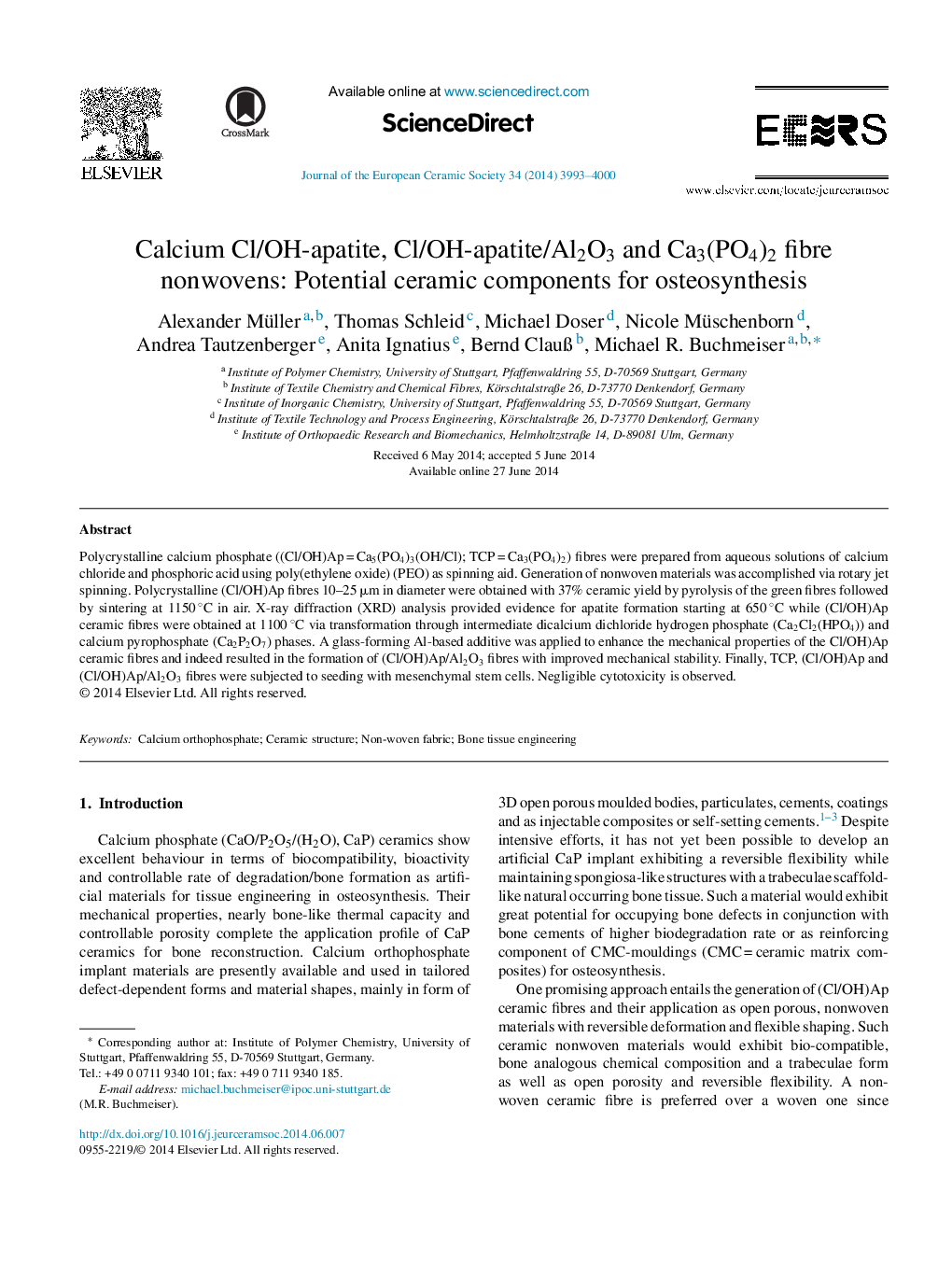| Article ID | Journal | Published Year | Pages | File Type |
|---|---|---|---|---|
| 1474484 | Journal of the European Ceramic Society | 2014 | 8 Pages |
Polycrystalline calcium phosphate ((Cl/OH)Ap = Ca5(PO4)3(OH/Cl); TCP = Ca3(PO4)2) fibres were prepared from aqueous solutions of calcium chloride and phosphoric acid using poly(ethylene oxide) (PEO) as spinning aid. Generation of nonwoven materials was accomplished via rotary jet spinning. Polycrystalline (Cl/OH)Ap fibres 10–25 μm in diameter were obtained with 37% ceramic yield by pyrolysis of the green fibres followed by sintering at 1150 °C in air. X-ray diffraction (XRD) analysis provided evidence for apatite formation starting at 650 °C while (Cl/OH)Ap ceramic fibres were obtained at 1100 °C via transformation through intermediate dicalcium dichloride hydrogen phosphate (Ca2Cl2(HPO4)) and calcium pyrophosphate (Ca2P2O7) phases. A glass-forming Al-based additive was applied to enhance the mechanical properties of the Cl/OH)Ap ceramic fibres and indeed resulted in the formation of (Cl/OH)Ap/Al2O3 fibres with improved mechanical stability. Finally, TCP, (Cl/OH)Ap and (Cl/OH)Ap/Al2O3 fibres were subjected to seeding with mesenchymal stem cells. Negligible cytotoxicity is observed.
